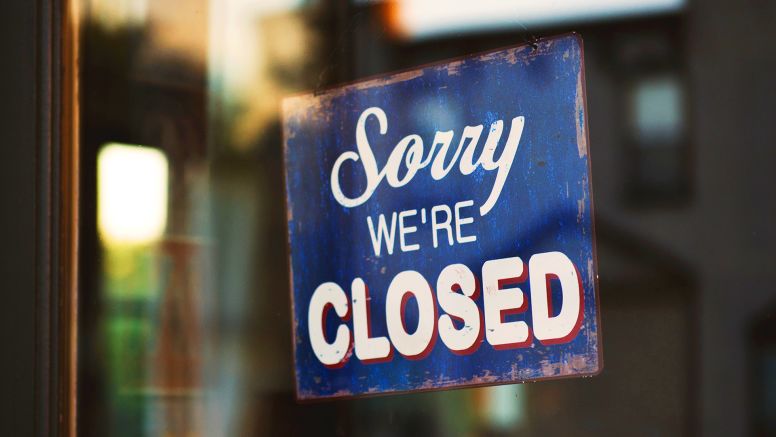News & Stories
Putting the COVID-19 pandemic in perspective

The Kenan Institute of Private Enterprise at UNC Kenan-Flagler Business School hosted a panel of faculty experts to analyze the COVID-19 pandemic from the perspective of their areas of research expertise. They discussed the virus with a focus on:
- Financial challenges for hospitals
- The effects of working while sick and under stress
- Global economic and financial market implications
- The ramifications for our nation’s working poor
- Managing individual finances and retirement portfolios
- Infrastructure and procedures to keep operations running and employees safe
- Working while sick and stressed
They spoke with journalists on a call you can listen to here. What follows is an edited transcript. Find more Kenan Institute of Private Enterprise briefings featuring UNC Kenan-Flagler faculty here.

The business impact on hospitals
Brad Staats, professor of operations and faculty director of the Center for the Business of Health
We know the kind of reports of stresses on the U.S. healthcare system already, and as we look at critical resources, in particular things like beds in intensive care units and ventilators, there are concerns about whether we’re going to have enough as the epidemic grows, assuming it follows similar paths to what has taken place in Western Europe and in China. Just in the U.S., estimates of the number of ventilators to treat respiratory disease like this are around 160,000. Our total hospital beds, around 1 million. For ICU beds around 100,000. And unfortunately, we’re likely to need far more than this even in a moderate pandemic.
Today though, I want to focus on the operational and financial implications as we think about hospitals. These are businesses with single-digit profit margins, close to 2% for our nonprofit hospitals, and when we look at COVID-19, it’s likely to have some very significant impact on hospital finances. There are both revenue implications and costs.
Start on the revenue side. First, there’s simply the cost of caring for COVID-19 patients. There are immense uncertainties right now. So the revenue will come in, but exactly how much is an open debate. What will Medicare end up paying for from a federal side? In addition, there’s likely to be significant uncompensated care. Folks will come in either lacking insurance or underinsured and consuming significant resources appropriately, but that creates a revenue gap for hospitals.
In addition, a big concern for hospitals is that the U.S. surgeon general has recommended hospitals stop elective procedures. This is understandable: Delaying non-urgent procedures if it keeps patients and staff safe, freeing up potential needed capacity is appropriate. However, the issue is that elected procedures are often what pay the bills at hospitals. McKinsey analysis found that elective care only made up about a quarter of revenue, but around 75% of operating profit.
What that means is taking away operating profit is likely to push hospitals into the red, into losses. On the cost side, there are really significant implications.
There’s this need for new equipment as one thinks about ventilators and other products. But that’s, of course, only if they can get the supply. In addition, there’s a surge in volume. So a need to cover the staff who is going to be required often working overtime – and significant overtime. And then given the infection rate of coronavirus, hospitals are likely to be paying staff on quarantine – and so often paying twice for the one kind of doctor or provider role that’s in the hospital.
When we look at all of this, it means significant pressure for hospitals that’s likely to result in meaningful losses. This is particularly concerning for rural hospitals. Our colleagues at the Sheps Center for Health Services have shown that over 70 rural hospitals have closed in the last decade, almost 700 are vulnerable and at risk of closure. The worry is the strain this puts on the healthcare system. It has a chance to continue to negatively impact the care and the structure of the overall system.
The final – and positive – note I’ll end on is there is the potential – given all of this change, given the potential shortage – that we could see kind of some speeding up of innovation. Things like hospital at home where at the moment regulators have prevented widespread use, but given the challenges we face we might have to grow more creative.

The impact on individuals
Jim Johnson, William R. Kenan Jr. Distinguished Professor of Strategy and Entrepreneurship and director of the Urban Investment Strategies Center
The coronavirus pandemic is particularly problematic for the nation’s working poor, especially those with school-age children who face the double whammy of lost earnings due to business shutdowns and heightened family food insecurity from mandatory school closings.
The working poor includes not only the millions of hospitality workers whose jobs have disappeared but also a host of public sector workers whose full-time jobs do not pay them enough to live an above poverty level existence. These are the people – civil servants – whose jobs are to protect public health and safety in our communities and educate our kids. They include police, fire and other emergency personnel as well as other civil servants, most notably, public school teachers. Because their full-time jobs do not pay a living wage, some are homeless and most moonlight in part-time jobs – in some instances in more than one – in the very sectors of the economy where business shutdowns are occurring due to the coronavirus pandemic.
Making matters worse, a significant number of the working poor live in multigenerational households and have caregiving responsibilities – either their own children or some other family member who is typically an older parent or grandparent. Food insecurity was already a problem prior to the coronavirus pandemic and it’s now magnified as school closings have left their children without the benefit of school-based nutrition programs. The strain that the pandemic has imposed on food banks and other community-based nutrition programs might make it difficult for older adult family members to receive the daily nutrition that they need to survive. Moreover, the children potentially can be infected but asymptomatic.
For the working poor, the pandemic-induced challenges are not only financial; they are also social and psychological. For those who are fortunate enough to still be gainfully employed, role strain or role conflict might be a major problem, especially for those whose jobs require daily interaction with the public. The emotional toll of simultaneously trying to do their jobs and look after the well-being of their own families can be enormously stressful and, in some instances, debilitating. Not to mention their likely fear of exposure to the coronavirus – a scary proposition since 70% of low-wage workers do not receive paid sick leave and many do not have the option to take unpaid sick leave. To be sure, many government and private sector efforts are underway to address these issues. But, if there ever was a time for our nation’s business schools to step up to the plate, the time is now. We can contribute in two significant ways.
We teach our students that three things matter in the world of business today: speed, agility and flexibility. The coronavirus pandemic affords us the unique opportunity to leverage the enormous talent that exist in our faculties and students to develop both traditional businesses and social purpose ventures aimed at addressing a host of the economic and social welfare challenges that we now face as a state, nation and global community.
We also are strategically positioned to issue a “call to action” for business leaders, encouraging them to extend their leadership skills to benefit society at this critical time in our history. This is the kind of leadership young people expect – and we all need – today.

Impact on the global economy
Christian Lundblad, Richard “Dick” Levin Distinguished Professor of Finance and chair of finance
There is no point in beating around the bush here – we are witnessing what is and will be a very painful decline in U.S. and global economic activity.
Fortunately, some aspects of this crisis are necessarily temporary given the unusual nature of the health shock.
Still, we will almost certainly enter a global recession, with a deep cut to 2Q GDP. Early data from China also suggest significant declines in economic activity there, and I expect no difference for the affected areas of the EU.
So, what can policy makers do about this? There are a few realities we have to confront.
First, monetary policy efforts will be limited in effectiveness. The Fed has already fully returned to the aggressive medicine of the financial crisis, and other central banks around the world are also moving – while these efforts are probably necessary, central banks simply don’t have the right tools for this unique job – this is no fault of theirs, it’s just an entirely different animal.
Second, the social containment required to address this health crisis, in fact, necessarily requires a slowdown in human, and hence economic, activity. In some sense, a reduction in GDP is required.
Finally, despite this necessary slowing medicine, there is a role for fiscal policy. A massive federal bailout of our economy is required. This is not about left or right – fiscal conservatives or green new dealers – the time for those arguments are later.
Right now, we need to think deeply about how best to keep severely impacted businesses and households afloat.
Many Americans simply don’t have the ability to be at home without a paycheck. An extended quarantine, interacted with, for instance, food insecurity, risks semi-permanently dislocating large components of our society.
Just think about the fact that the general service sector, employing millions of American hourly workers facing just these risks, is increasingly closed for business.
Send a significant check right now to every American making less than some (reasonable) amount. We can argue about what that amount should be, but this kind of support is what fiscal policy is for.
Some particular industries also need help. Small businesses, the often-heralded backbone of our economy, are quite vulnerable to dislocation. They need working capital, as an example — and the touch point to their employees is there.
The transport industry, as an additional hard-hit example, employs hundreds of thousands of Americans. The longer this persists, this industry and its employees will be in serious danger.
To be clear, this shock is itself what we call exogenous – meaning its external to the economy – it is not permanent as it runs its course. However, these deeper vulnerabilities – of certain industries or households – might yet engender what we call negative multiplier effects – amplifying the impact of the virus. Let’s avoid seeing industries pushed into irreversible negative trajectories – and a lot of collateral damage – by employing targeted support.
In normal times, our government has no problem borrowing endlessly for a host of questionable activities – here is an undeniably important endeavor – do it!
To be clear, regardless of our decisions today, general economic uncertainty and financial market volatility are here to stay for some time. It’s going to get worse before it gets better. However, while the cut will be deep and the opportunities for amplification real, this will pass. We will get through this. Further, we do control aspects of the rate at which it can get better.
Last, if you will indulge me for a moment, let me conclude with a rather different perspective. Can we please turn this catastrophe into an extraordinary opportunity to begin to knit our society back together? This is our time to step up. History is calling upon us to make a positive contribution to our families, our communities, our country and the world.
Just as this is not the time for left vs. right – the caustic intergenerational divide also requires a specific pause.
Rather than being cynical, older folks – trust the authenticity of our younger generations in America today – trust their ability to deliver. They are your legacy and they can do this.
For young people, history is disproportionately calling on you – you, who passionately express a desire to affect change and make a difference – here it is. This is your time. Not only do our most vulnerable need you to help contain the spread right now, if this does indeed become catastrophic, you will be called upon to lead – to step up while older and more vulnerable folks are in deep distress. They are your compatriots – they are your loved ones.
Now is an opportunity to change the popular internet meme to something more reflective of our current challenge: “Ok, Boomer. How can I help?”

Financial market implications on retirement
Greg Brown, Kenan Institute of Private Enterprise director and distinguished professor of finance
I know that there’s been so many different things happening in so many different quarters. Obviously, what’s happening with the human tragedy right now is the most important aspect of the crisis, but I think there are important real ramifications for what’s been happening in financial markets as well.
I want to give a very quick recap of what’s been happening in financial markets and then think about what the implication is for a typical household. We know March 16 was one of the very worst days in stock markets ever. If we look at cumulative returns in the U.S. market, down about 25% year to date, things are improving a little bit, but we know that it’s been huge ups and downs for the last couple of weeks. European markets had been off a little bit more down, about 35% year to date. And surprisingly Asian markets have not been as hard hit, only down about 20%. Overall, the world markets as a whole are down about 28% year to date.
Now in contrast, there’s been a big flight to quality as people have sought out safe havens in financial markets. That typically means bonds. There’s been a huge rally in a U.S. treasury bonds and other high quality, typically government-backed bonds.
But on the flip side, a big part of the bond market in the U.S. is mortgage-backed bonds and corporate bonds, which have not fared as well. So overall, the bond market is up, but it’s just up a little bit, about 1% year to date. If we think about a typical investor that might have a portfolio that’s 60% stocks and 40% bonds, they would be down about 15% year to date.
Why is this important to talk about right now? I think it’s very important to think about what’s happening in financial markets because now more than ever, individuals are responsible for their own retirement savings through defined contribution plans. The days of government pension funds and defined benefit plans has waned. A relatively small percentage of the population is now part of a corporate or public sector defined benefit plan.
This is a really big responsibility for people because most folks don’t have investment expertise on their own and only access to very limited expertise through their employer or through commercial providers. The sudden decline in markets is a big risk for people because some people panic and panicking right now runs the risk of selling at the bottom. We saw quite a few households do this in the 2008 and 2009 market decline as well as after the dot-com bust in the 2000 through 2002 era.
And then what happened is as markets stabilized and people saw markets going back up, then they got back into the market and set themselves up for the next downturn. People’s fear and their instincts can really hurt their retirement prospects, so I want to talk very briefly about what it is people should do.
So first of all, people should have a good feel for what their risk tolerance is. It’s maybe too late to deal with that in the current situation. But hopefully people have some notion for the amount of risk they should be taking. A commonly used rule of thumb is that someone should be allocating about a hundred minus their age. So for example, a 40-year-old should be allocating about a hundred minus 40 or 60% of their assets to risky things like stocks. And then the other 40% to safer assets like bonds and cash.
So regardless of whether this is exactly the right rule for you, investors really should not be taking more risks than they can tolerate when the market takes a dive. And by “a dive,” what do we mean by that? We’re poised right now for the market taking a dive by historical norms. We can think of a peak-to-trough decline in markets of around 50%, so halving of the stock market value is a dive. And while that sounds like a lot, we’ve had two instances in the last 20 years: both the dot-com bubble bursting and the global financial crisis where stocks were down about 50%. So as a practical matter, I think people should only be allocating as much to risky assets as they’re willing to tolerate if they go down by 50%.
So go back to our 40-year-old person, and hopefully they’ve started 2020 with a portfolio that was 60% stocks and 40% bonds. Well with the market decline, they’re now only 53% stocks, so in some sense they’re actually underweight the target allocation. Ideally, they would have the courage at some point in the near future to sell some of their bonds, which have appreciated slightly, and buy stocks to get back to that 60% target.
Now, of course, this is a very scary thing to do. And it’s also the case that things could get worse before they get better; the market could go down another 25%. So it isn’t that investors should be trying to time the market. It isn’t that they need to be looking at the market every day, or every week, or even every month. But I think they should get comfortable with the idea that it’s okay to rebalance each quarter, or a couple times over the year, and most importantly not to panic. So they should be thinking, “Okay, right now with the market decline, I don’t want to be selling stocks. I want to be thinking about buying stocks so that inevitably when the recovery does come, I’m well positioned to benefit from that.” And the empirical evidence suggests that this is good advice, this actually works, that when markets are dislocated like they are right now, when there is very negative sentiment about what’s going to happen to financial assets, then future returns are actually higher than average. This could be fair compensation for taking on additional risk, or it could be that markets tend to get oversold as people get very pessimistic, unduly pessimistic, about what the long-term prospects are for returns of financial assets.

Developing infrastructure
Lauren Lu, professor of operations
I’m going to take the perspective of individual businesses and talk about the implications of this pandemic on companies’ supply-chain management.
For most businesses, the coronavirus pandemic is unprecedented in terms of the scale of the threat to their employees, customers and suppliers. The situation is evolving quickly. And there will be a great deal of uncertainty in the next few months, as the full impact of the pandemic on the world economy is taking shape.
As the situation unfolds, companies around the world need to act quickly to develop an action plan in response to the crisis. First and foremost, the coronavirus pandemic is a humanitarian crisis; worker safety is the priority of all employers. By making arrangements for employees to work remotely, by adopting technologies to ensure efficient collaboration or temporarily shutting down facilities, workers would have option to perform their jobs and protect their own safety and health.
Beyond these worker protection measures, businesses need to maintain essential activities to not only survive the crisis financially, but also contribute to the continued functioning of the global economic system and the society. From the perspective of supply chain management, what are the key steps companies can take to ensure business continuity?
Supplier management: Companies should actively engage current suppliers to ensure supply. Supplier managers need to keep a close eye on inventory levels and inbound shipments to spot any anomaly. Any drastic jobbing shipments should get immediate attention and be alerted to higher management. Supply managers should also maintain an active communication channel with key suppliers. Once supply disruption does occur, companies would need to develop workarounds with suppliers or negotiate alternative routing suppliers’ network to secure continuous supply.
Many industries have already experienced a sudden jobbing and customer demand caused by the pandemic. And some companies have already phased a shutdown as part of their operations. Those small-to-medium sized suppliers are struggling the most in terms of cashflows. In this situation, companies may come see the offering financial health to these suppliers if they are critical to the business.
Aside from these immediate actions, as a long-term strategy, companies should develop a geographically diverse supply base and proactively seek backup suppliers. Even in a pandemic like this, not all countries and regions are hit hard at the same time. If your company hasn’t adopted a global sorting strategy to diversify your supply base, it’s probably time to do so.
Demand management: As the coronavirus crisis is spreading to almost every region of the world, all businesses will need to revise their short-term and medium-term demand forecasts. To do so, they will need to get more precise estimates from their customers, and also gather marketing intelligence to accurately estimate customer demand. Companies should monitor customer orders closely to identify early signs of struggle. They might consider offering trade credits to finance orders for those customers who are facing a short term cashflow crunch.
Distribution and logistics: The impact of the current pandemic is not uniform across a company’s supply chain. Based on the newly identified demand-and-supply shifts in their supply chain, companies should re-optimize capacity and inventory allocations in their distribution networks to respond to these changes. Companies should also secure alternative transportation modes and routes to ensure continuous material flows in the supply chain. Looking into the long term, companies should consider investing in automation technologies in their warehouses and logistics centers, which will help them hedge against the risk of labor shortages during future pandemics.
Companies should respond quickly to the coronavirus pandemic by establishing remote and flexible work arrangements for their employees. They should also dissect their existing supply chains and develop action plans to ensure business continuity. Meanwhile, they should invest in building a resilient supply chain to keep them competitive during future disease outbreaks or any type of large-scale supplies disruptions.
Staying resilient in uncertain times
Mike Christian, Sarah Graham Kenan Associate Professor of organizational behavior and academic director of leadership
We’re in a time of enormous uncertainty. And the science suggests that in times of uncertainty, we’re at risk for stress and anxiety, for poor performance, and for making riskier decisions. The good news is that we have an emerging understanding of human resilience, and there are several recommendations that I’m planning to make based on this understanding.
We understand that three representations of human energy help us maintain our resilience. I’ll refer to them as mind, the body and emotions. And each is important to the other, and they’re interlinked. We should actively cultivate each strategy to be intentional about using each one.
I have five recommendations to help people to be more resilient during this crisis.
- Take care of your mind. I encourage everyone to think about what you can control and what you can’t control. Make a list if it helps. So be intentional about focusing on what you can control: Limit your exposure, stay home, wash your hands, call family members if you need to connect. Do the best that you can in your own sphere of influence. Don’t overly focus on the million factors that are spinning around you that you have no control over. We’re tempted to stay on the news 24-7 right now. But I would assert that staying glued to the iPad, the computer or the TV is doing more harm than good. The main reason is that as individuals, we have no control over any of what’s happening on a global or population scale. So, the result is anxiety and stress. Of course, it’s important to stay informed about the situation, but instead check in with the news on a schedule that works for you.
- Take care of your body. Getting a good night’s sleep can help us with a lot of benefits. In the current situation, we can keep our energy up and do our best to make good personal choices, such as eating healthy, keeping alcohol consumption low, maintain a fitness routine. And this all starts with good sleep. Sleep has immunological benefits; it’s good for us, which is important in a time like this. But our studies also indicate that it’s associated with self-control. When you get enough sleep, you have more ability to override your short-term temptations to make choices that benefit you in the long term. When we get a good night’s sleep, the prefrontal cortex – the part of the brain that’s responsible for executive control and the regulation of our emotions, our thoughts and our actions – is more effective. So, by sleeping intentionally, we lay the foundation for keeping ourselves healthy and our energy up.
- Take care of your emotions. Actively seek social support – and actively give it to those who need it right now. People have a basic need for connection. And as you hunker down, you’re essentially isolating yourselves. Call your parents, your kids, your friends and your loved ones –every day. And keep a sense of social connection alive to keep feelings of isolation at bay.
- Take care of others. We have a moral and a social responsibility to stay physically apart from other people. Some people, particularly younger people, aren’t worried and are not appropriately social distancing because they might not be at high risk themselves. So we need to ensure that we not only take care of ourselves, but also consider it to be a moral imperative to think about the health of others. The best that we can do is keep distance from others by staying out of public. I see this as a moral social responsibility.
- Give yourself and your employees a break. If you are feeling sick, focus on getting healthy. You’re not going to function at your best anyway. We have to contend with the notion that many people could have to work while feeling sick. And although the majority of COVID-19 cases don’t require hospitalization, they do result in symptoms that require management. The easiest way to think about the effects of working while sick are that when we’re sick, our energy is less available to us. Our studies show that pain and sickness demand attention. And this means that people who are working sick aren’t as focused or engaged in their tasks, and it means that the cognitive resources that we usually have free are being used up as we think about how we’re not feeling well.
For that reason, we find that employees are less likely to engage in extra role behaviors such as helping others or going above and beyond their personal responsibilities. Employees who feel sick will just focus on just getting by. Leaders and managers need to adapt their expectations to the realities of the situation. Deadlines that can be moved should be moved to the extent possible. Managers can help employees prioritize what are the most important tasks and goals right now and what can they can table for a little while.
So, as we hunker down, we can take care of our personal energies: our minds, our bodies and our emotions. We can take care of others by staying home. And we can give our employees the ability to control what they can.